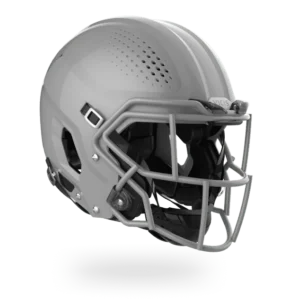Football is a popular sport worldwide. It is a sport that offers enjoyable exercise and aids in developing coordination, balance, agility, and teamwork. However, one of the significant drawbacks of playing this exciting game is football injuries. In most cases, injuries are mild, and it corrects itself with proper rest.
Football injuries can occur during practice or while playing games. This is because it is a high-speed and full-contact sport. Some injuries need an extended period out of the game, surgery, or physiotherapy. To minimize the chances of succumbing to a moderate or serious injury, it is best to know more about common football injuries.
Common football injuries
Here are the five most common types of football injuries.
- Traumatic injuries: A sudden trauma or jolt can lead to traumatic injuries. In football, knee injuries are common. Injuries happen to the posterior or anterior cruciate ligament (PCL/ACL) and the cartilage of the knee (menisci). These football injuries to the knee can adversely affect a player’s involvement in the sport for the long term. The chances of ankle sprains are also high because of cutting motions and the ground surface. Football players are susceptible to shoulder injuries. The labrum, which is the cartilage bumper surrounding the shoulder’s socket, gets easily injured in offensive and defensive linemen. Also, injuries to the acromioclavicular joint (ACJ) are common in football players.
- Concussions: Traumatic brain injuries are common while playing sports. A concussion is a change in the mental state because of a traumatic event. It can lead to temporary loss of normal brain function. However, not everyone who suffers a concussion loses consciousness. Some signs and symptoms of concussion are headaches, nausea, drowsiness, dizziness, loss of balance, numbness or tingling, difficulty concentrating, and blurry vision. You should return to play sports only when a health care professional grants clearance. Even the cases of mild concussions should be taken seriously.
- Overuse injuries: Repeated micro-trauma causes overuse injury rather than a specific injury event. The onset of symptoms is gradual. During the early stages of the overuse injury, there is little or no pain. Hence, football players unknowingly continue to put pressure on the injured area. As a result, the injured area does not have time to heal and overloads the capacity of the tissue to repair itself. A common complaint of football players is low-back pain or back pain. It is due to overuse. Sometimes, over-training also causes overuse injuries. A player trains excessively and trains the body beyond its capacity to recover. Patellar tendinitis is another common problem that develops in football players. For such injuries, the quadriceps strengthening program is helpful.
- Heat injuries: At the start of training camp, heat injuries are a significant concern amongst young football players. This usually is common in the summer months when the temperature and humidity are high. Intense physical activity causes excessive sweating that depletes the body of water and salt. Heat exhaustion and heat stroke can even result in death. Fluid replacement and hydration are crucial. It is vital to inform medical staff of signs and symptoms of heat injury.
- Sprains and strains: Another most common type of football injury is sprains and strains. The ankles of a football player are subjected to tremendous amounts of strain throughout a game. The twist and turns and sprints put pressure on the tendons, bones, and muscles. This leaves ankles particularly susceptible to a football injury. Hamstring strains and tears involve tightness and discomfort. Treatment of sprains and strains depends on the location and severity of the injury. However, simple measures like rest, elevation, ice packs can help initially. The earliest symptoms of sprains and strains are painful cramping of muscles.
It is impossible to play football over the years without picking up any injury. However, knowing the technique, regular resistance training, warming up before matches, and listening to your body is the key to minimize your chances of football injuries.






